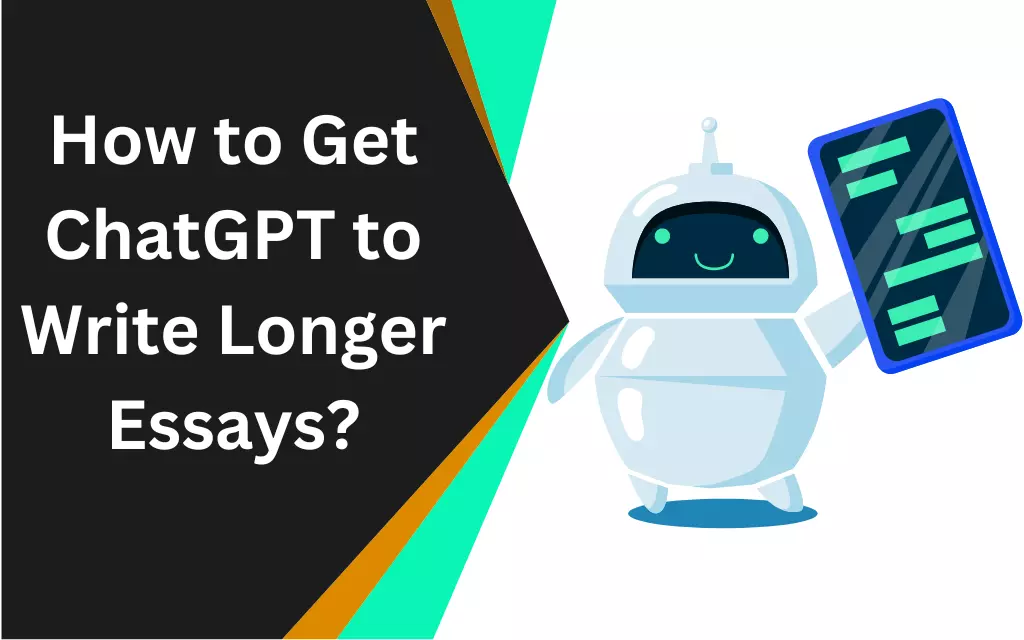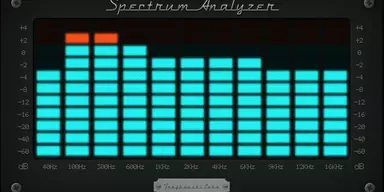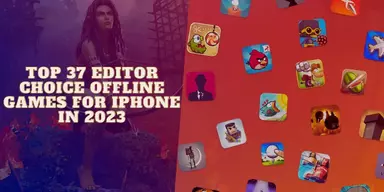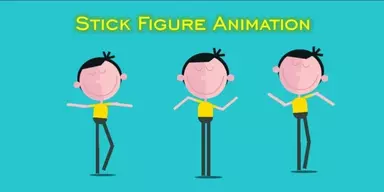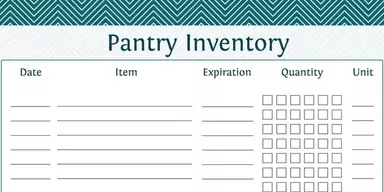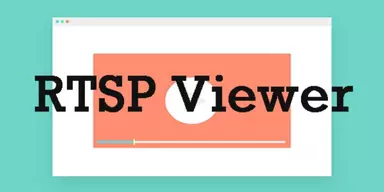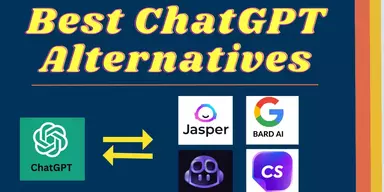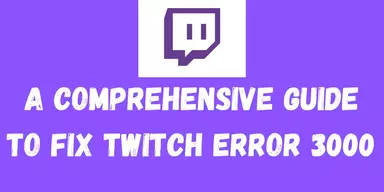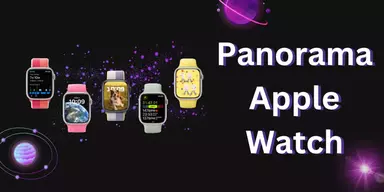An Artificial Intelligence (AI) chatbotnamed ChatGPT was created by OpenAIand published in November 2022. It has been fine-tuned (a method of transfer learning) using both supervisedand reinforcement learning approaches, and it is built on top of OpenAI’s GPT-3.5 and GPT-4 fundamental Large Language Models (LLMs).
On November 30, 2022, ChatGPT debuted as a prototypeand quickly gained popularity for its thorough replies and clear responses in various subject areas. Its tendency to answer questions with assurance while being factually inaccurate has been noted as a key negative.(1)
Following the introduction of ChatGPT in 2023, the worth of OpenAI was pegged at US$29 billion. The introduction of chatbots has heightened the level of competitiveness in the market, hastening the release of Google’s Bard and Meta’s LLaMA.(2)
The following is a definition of ChatGPT that a five-year-old might understand:
ChatGPT is akin to having a conversational, question-answering robot companion. If you ask it a question or enter some text, it will do its best to respond with useful information.
ChatGPT is an AI-powered chatbot and a state-of-the-art AI language model created by OpenAI.
It can have discussions through text and provide information on many subjects.
Imagine a clever chatbot that can read and reply to text like a real person.
Now that we’re all on the same page regarding what ChatGPT is, we can move on to today’s major topic: the ChatGPT character limit.
This blog article will explain how to get ChatGPT to write longer essays.
Through a series of tests conducted inside ChatGPT itself, we will also discover the character restriction, if any, and methods for avoiding it in order to write longer essays.
What is the maximum number of characters for Chat GPT replies to write a longer essay?
When replying, how many characters does Chat GPT support? How lengthy of essays can it write?
Is there a limit on the number of characters that may be used? What is it if so?
Experiment 1 ChatGPT Character Limit: How to get ChatGPT to write longer essays (Listicle Questions)

Recently, I asked a query through ChatGPT and ran into trouble. Let’s see what happens if you experiment on your own.
Topic: List of 20 mythical creatures from ancient Greece with descriptions of their physical characteristics and special skills, strength, and weakness.
Target: ChatGPT must list all the 20 mythical creatures with the given requirements.
If the experiment’s goals were met, it was considered a success; otherwise, it was considered a failure.
Holding thumbs…
This is what we found:
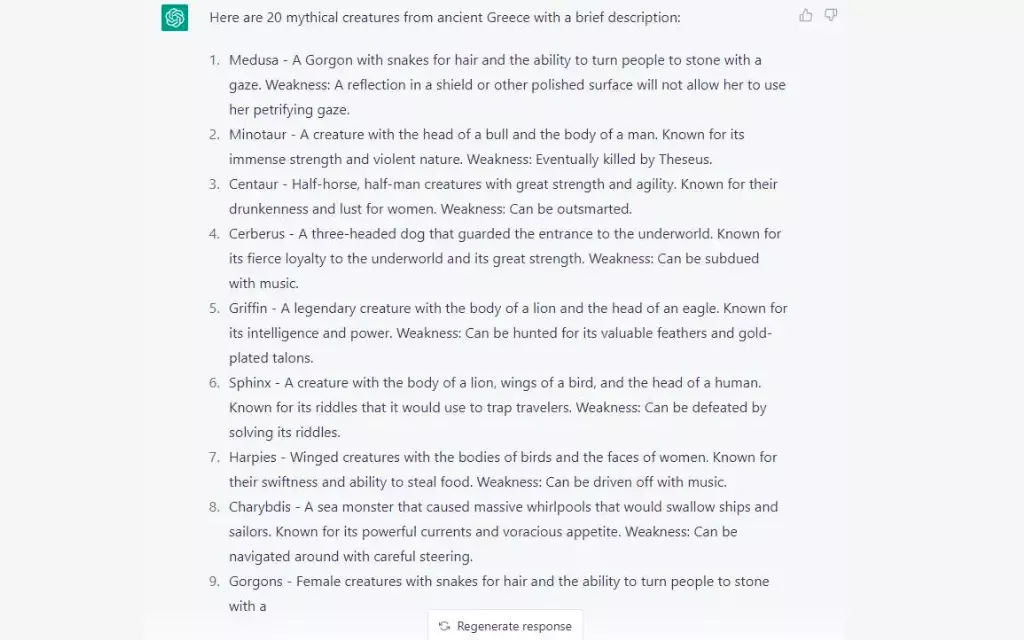
A total of 1349 characters and a maximum of 283 Words were produced when ChatGPT ceased responding on the 9th of the 20th category.
We can’t say for sure that the time it stopped was its character limit based on this one trial; instead, let’s do two additional tests under two distinct conditions.
Experiment 2 ChatGPT Character Limit: How to get ChatGPT to write longer essays (Essay Question)

To have ChatGPT write an essay for us, we will ask it to do so.
Write an essay for me on Greek mythological characters.
The goal is to count all words written in response to essay prompts.
This concludes our results for this experiment.
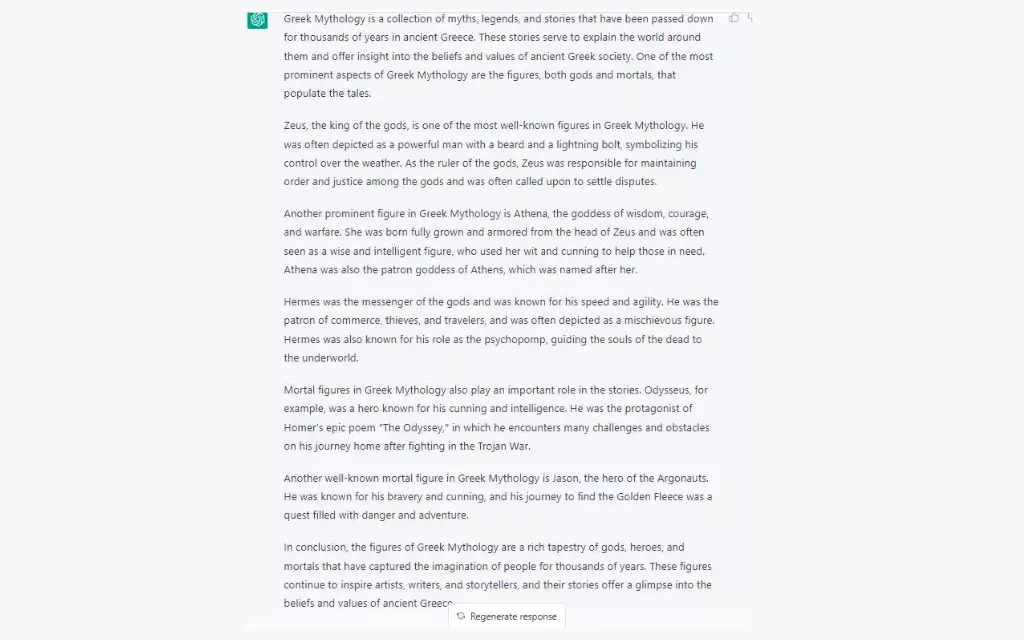
ChatGPT generated a whole article — 378 words long and 1815 characters in length — in response to an essay question.
It seems like this is missing some key information.
So, are you interested in pushing ChatGPT to its limits?
Come on, then.
Experiment 3 ChatGPT Character Limit: How to get ChatGPT to write longer essays (Custom Question)

In this last test, we’ll have ChatGPT compose an article with a word count of 1500.
1500 Word Topic History of Rome, an Entire Article
ChatGPT must aim for a minimum of 1000 words and ideally 1500.
An essay generated using ChatGPT with more than 1000 words is deemed a successful experiment.
The end outcome of our experiment is as follows:
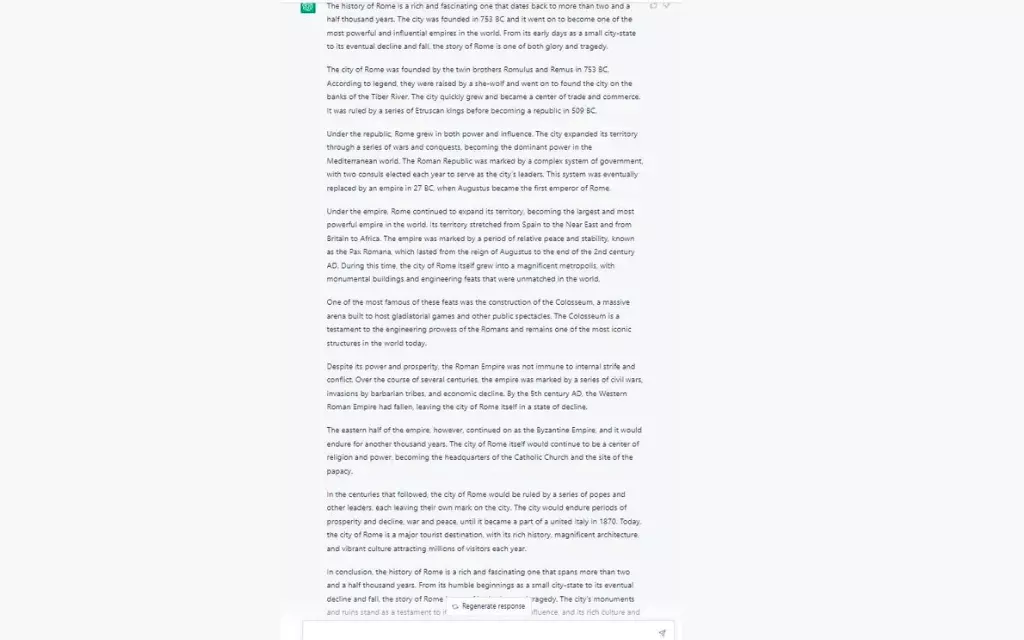
Well, you can probably see from the visual above that ChatGPT generates far more text than the last essay did; in this case, we receive 615 words and 2835 characters.
Based on these tests, how many characters is ChatGPT able to support?
ChatGPT’s character count limit is determined by the complexity of your query.
A listicle question may have a character restriction of 1400, whereas an essay question may have a limit of 2000.
Please keep in mind that the aforementioned figures are just an estimate and that much will rely on the nature of your unique inquiries.
Does ChatGPT have a word limit?
There have been several public vents from ChatGPT users about the problem of getting a “internal server error” while typing out lengthy comments.

ChatGPT character limit input
But these word limits are all over the place, so your experience may vary from others’. There may be a hard cap on the total amount of messages and answers you may send before your “token limit” kicks in.
At now, it is believed that there is a hard cap of about 4000 tokens. Therefore, you will likely need to start a new inquiry if the combined token count of your messages and answers is more than 4000.
It’s possible to go over this limit or to run into a wall at lower token counts; there’s still a lot to learn about the token system’s underlying architecture.
You should do experiments with your messages and enquiries to find out how long you can wait for a response before giving up. This will allow you to figure out for yourself how many words are allowed in a ChatGPT post.
How to make ChatGPT Write longer and produce more words? Fine-Tuning ChatGPT Word and Character Limit.
Did you try to make ChatGPT to write an essay with fine tuning words and character limit? Let’s discuss it further.
The character restriction in ChatGPT has been identified, and its existence has been confirmed. We found out that ChatGPT has a variable character limit on its replies, so it can’t keep cranking out super-long ones.
Oh, but wait!
A solution exists.
Indeed, we mean business.
You’re free to use ChatGPT as much as before to create new words and characters.
Use the Continue Prompt
If you want ChatGPT to keep providing you answers after you’ve got one, just put “continue” or “Go On” in the shared box after your first response.
This is brilliant; let’s examine the results of our first experiment and see how they connect.
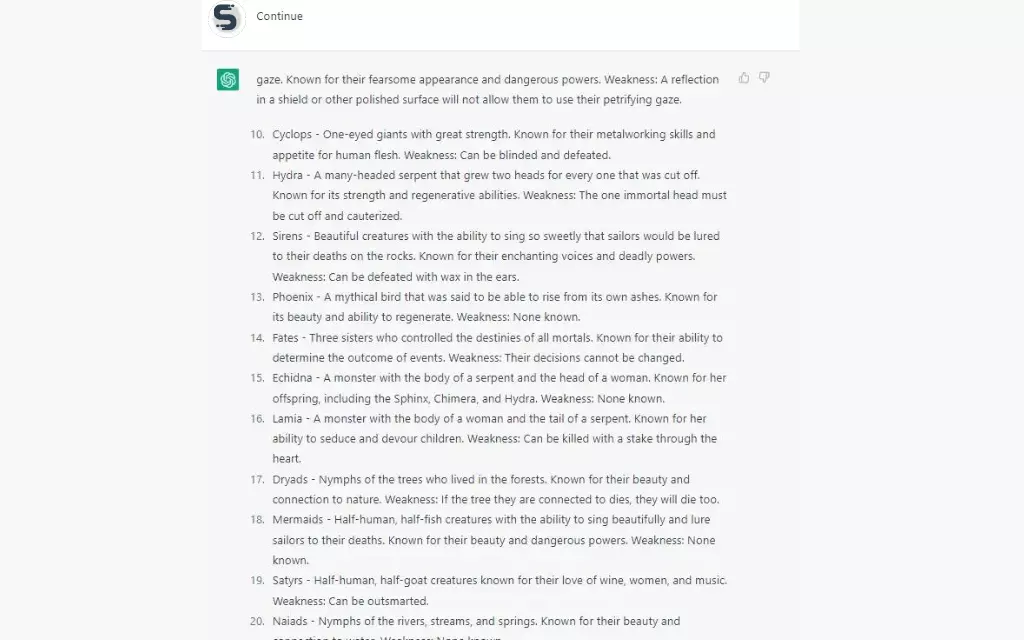
Look how the prompt keeps going all the way to the 20th category after being shut off in the 9th just now! Our first inquiry has been completely answered.
Use the Expand Prompt
Now that you have a concrete response from ChatGPT, you may gain extra words and characters by copying the text and pasting it into the shared box with the word “expand” appended to the beginning of the selection.
It’s a straightforward method for eliciting more detailed replies from ChatGPT.
If you highlight certain text, you’ll get a more in-depth explanation of only that section.
Try it out and see if it helps.
Initial Question:

Initial Response
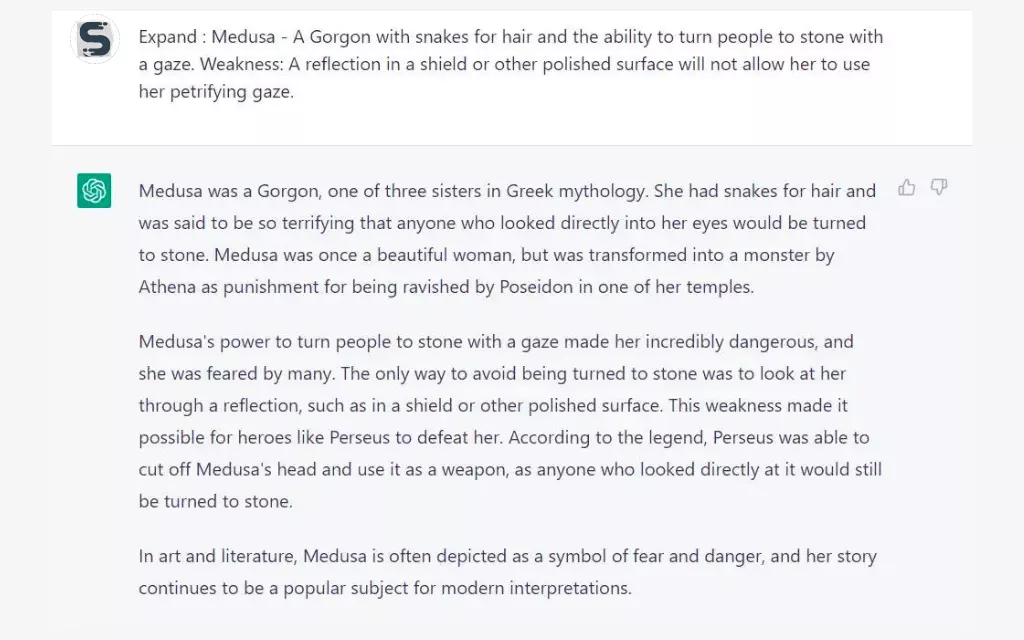
The more comprehensive answer you get after expanding your question.
ChatGPT uses deep learning AI to determine whether you’ve asked for more information on a previous answer.
ChatGPT will immediately respond to a revised inquiry with a more in-depth explanation of its previous response.
Page numbers at the end of each answer I found a way to increase production by adding text like “page 1 of 10” at the end of each response.
Then, to proceed, enter “page 2 of 10,” and the computer will take it from there.
This strategy has been tried and tested by us and shown to be effective.
How it Functions
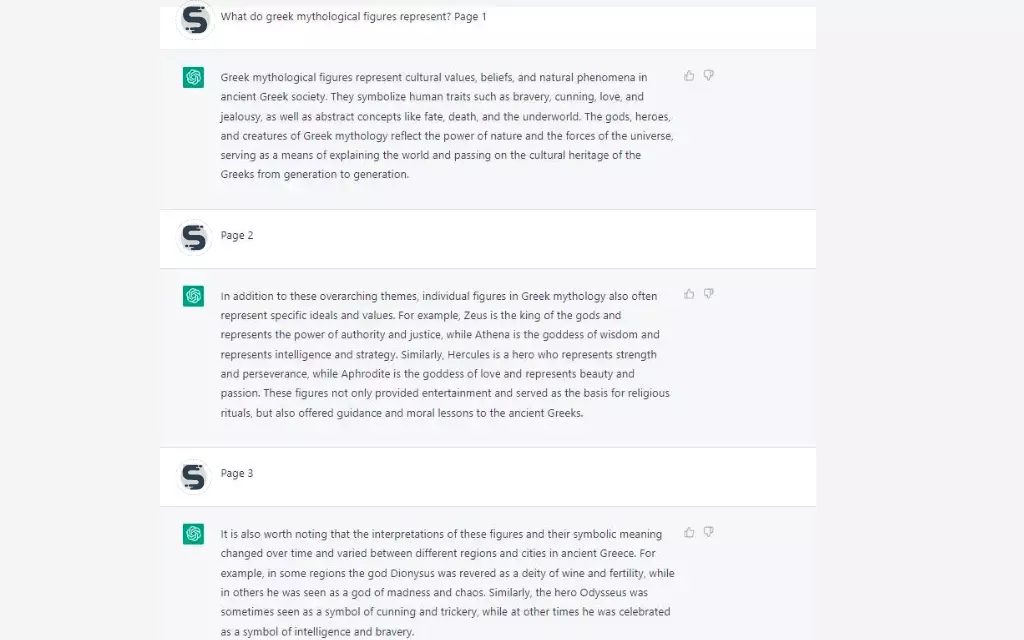
Get it rewritten in 1000 words by ChatGPT: Don’t generalize your question.
Do you know how to use ChatGPT to write an essay of at least 1000 words? Let’s talk over it
ChatGPT may be prompted to rewrite the complete 1000 words or more in your next inquiry immediately after it has responded.
Although the output won’t be precisely 1000 words, the quality and quantity of the updated answer would be far greater.
Here’s a case in point:
The First Response:

Rewritten Answer:
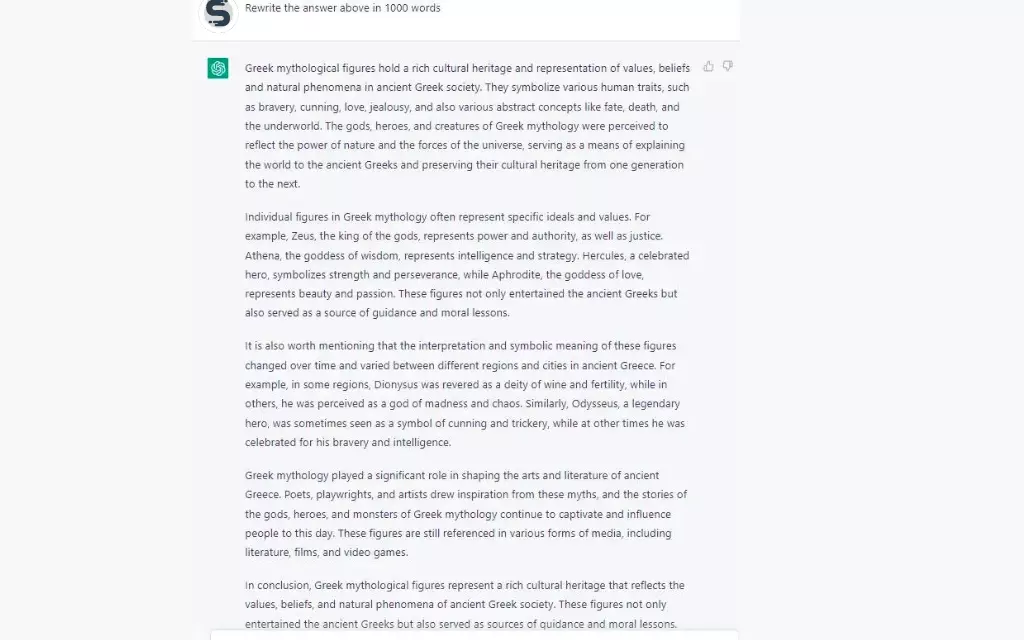
ChatGPT may be asked to “Not enough, write more” if the answer you received was insufficient.
You may get the desired length of your paper by doing so.
Be sure to ask a really precise query at the beginning.
In my case, I got around 600–700 words out of the query, but if you give it more specifics in your original answer, it will have the information it needs to produce the number of words you requested.
Another option that comes to mind is to add additional subheadings, which address the issue of specificity.
Sources
- Vincent, J. (2022). “AI-generated answers temporarily banned on coding Q&A site Stack Overflow” TheVerge https://www.theverge.com/2022/12/5/23493932/chatgpt-ai-generated-answers-temporarily-banned-stack-overflow-llms-dangers
- Varanasi, L. (2023). “ChatGPT creator OpenAI is in talks to sell shares in a tender offer that would double the startup's valuation to $29 billion” Insider https://www.businessinsider.com/chatgpt-creator-openai-talks-for-tender-offer-at-29-billion-2023-1
- Haristiani, N. (2029). “Artificial Intelligence (AI) chatbot as language learning medium: An inquiry.” In Journal of Physics: Conference Series IOP Publishing. https://iopscience.iop.org/article/10.1088/1742-6596/1387/1/012020/meta
- Adamopoulou, E., & Moussiades, L. (2020). “An overview of chatbot technology.” In Artificial Intelligence Applications and Innovations: 16th IFIP WG 12.5 International Conference Springer International Publishing. https://link.springer.com/chapter/10.1007/978-3-030-49186-4_31
- Hashemi-Pour, C. (2023). “OpenAI” TechTarget https://www.techtarget.com/searchenterpriseai/definition/OpenAI
- Torrey, L., & Shavlik, J. (2010). “Transfer learning” In Handbook of research on machine learning applications and trends: algorithms, methods, and techniques IGI global. https://www.igi-global.com/chapter/transfer-learning/36988
- Osisanwo, F. Y., Akinsola, J. E. T., Awodele, O., Hinmikaiye, J. O., Olakanmi, O., & Akinjobi, J. (2017). “Supervised machine learning algorithms: classification and comparison.” International Journal of Computer Trends and Technology (IJCTT) https://www.researchgate.net/profile/J-E-T-Akinsola/publication/318338750_Supervised_Machine_Learning_Algorithms_Classification_and_Comparison/links/596481dd0f7e9b819497e265/Supervised-Machine-Learning-Algorithms-Classification-and-Comparison.pdf
- Li, Y. (2017). “Deep reinforcement learning. An overview.” https://arxiv.org/abs/1701.07274
- Hagendorff, T., Fabi, S., & Kosinski, M. (2022). “Machine intuition: Uncovering human-like intuitive decision-making in GPT-3.5.” arXiv preprint arXiv:2212.05206. https://arxiv.org/abs/2212.05206
- Peng, B., Li, C., He, P., Galley, M., & Gao, J. (2023). “Instruction tuning with gpt-4.” arXiv preprint arXiv:2304.03277 https://arxiv.org/abs/2304.03277
- y Arcas, B. A. (2022). (2022). “Do Large Language Models Understand Us?” Daedalus https://direct.mit.edu/daed/article/151/2/183/110604/Do-Large-Language-Models-Understand-Us
- Hampton, J. (1993). “Prototype models of concept representation.” APA PsycNet https://psycnet.apa.org/record/1993-97009-003
- He, B., Xia, M., Yu, X., Jian, P., Meng, H., & Chen, Z. (2017). “An educational robot system of visual question answering for preschoolers.” In 2017 2nd international conference on robotics and automation engineering https://ieeexplore.ieee.org/abstract/document/8291426/
- Kawahara, T. (2019). “Spoken dialogue system for a human-like conversational robot ERICA. In 9th International Workshop on Spoken Dialogue System Technology” Springer Singapore https://link.springer.com/chapter/10.1007/978-981-13-9443-0_6
- Stan. (2023). “Does ChatGPT Have a Character Limit? ChatGPT vs. STAN AI” StanIntelligence https://www.stanintelligence.com/blog/chatgpt-vs-stan-a-i-does-chatgpt-have-a-character-limit
- Wankhede, C. (2023). “Does ChatGPT have a character limit? Here's how to bypass it” AndroidAuthority https://www.androidauthority.com/chatgpt-character-limit-3292997/
- McMillan, M. (2023). “What is Google Bard? Everything you need to know about ChatGPT rival” Tom'sGuide https://www.tomsguide.com/news/google-bard-ai
- Ortiz, S. (2023). “The best AI chatbots: ChatGPT and other noteworthy alternatives” Zdnet https://www.zdnet.com/article/best-ai-chatbot/
- Floridi, L. (2023). “AI as Agency without Intelligence: On ChatGPT, large language models, and other generative models.” Philosophy & Technology https://ai.facebook.com/blog/large-language-model-llama-meta-ai/
- Jiang, Z., Xu, F. F., Araki, J., & Neubig, G. (2020). “How can we know what language models know?” Transactions of the Association for Computational Linguistics https://direct.mit.edu/tacl/article/doi/10.1162/tacl_a_00324/96460/How-Can-We-Know-What-Language-Models-Know

